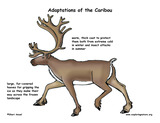
This lesson is about animal adaptations of animals that are found in Utah.
- Subject:
- Science
- Material Type:
- Assessment
- Homework/Assignment
- Author:
- Tiffany
- Date Added:
- 11/12/2020

This lesson is about animal adaptations of animals that are found in Utah.

Second Grade ScienceStrand 2.2: LIVING THINGS AND THEIR HABITATSLiving things (plants and animals, including humans) need water, air, and resources from the land to survive and live in habitats that provide these necessities. The physical characteristics of plants and animals reflect the habitat in which they live. Animals also have modified behaviors that help them survive, grow, and meet their needs. Humans sometimes mimic plant and animal adaptations to survive in their environment.Standard 2.2.1Obtain, evaluate, and communicate information about patterns of living things (plants and animals, including humans) in different habitats. Emphasize the diversity of living things in land and water habitats. Examples of patterns in habitats could include descriptions of temperature or precipitation and the types of plants and animals found in land habitats. (LS2.C, LS4.C, LS4.D)Students will be able to observe and discuss animal adaptations. They will demostrate their understanding by coming up with adaptations the animal would need to survive in a different type of habitat. <a href='https://www.freepik.com/photos/snow-leopard'>Snow leopard photo created by vladimircech - www.freepik.com</a>

This lesson is an art integration lesson based on the following standards: Standard 3.2.5Engage in argument from evidence that in a particular habitat (system) some organisms can survive well, some survive less well, and some cannot survive at all. Emphasize that organisms and habitats form systems in which the parts depend upon each other. Examples of evidence could include needs and characteristics of the organisms and habitats involved such as cacti growing in dry, sandy soil but not surviving in wet, saturated soil. (LS4.C) Standard 3.V.CR.1:Elaborate on an imaginative idea and apply knowledge of available resources, tools, and technologies to investigate personal ideas through the art-making process.
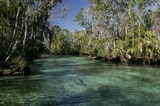
Second-grade lesson on the types of habitats and needs of living things. Students will create a poster that shows what they learned about a specific habitat. Student goals/intended outcomes: Students will be able to identify the different habitats and at least 3 animals that live in each habitat. Students will be able to identify and list the four needs of animals. (food, water, shelter, air)https://pixnio.com/fauna-animals/manatee-pictures/tropical-habitat-natural-environment-for-manatee-mammals

This is a lesson plan for activities intended to teach students what a habitat is, some of the types of habitats found around the world, and different animals that live in them. It includes a discussion about the word, photos depicting various habitats, a game of guessing where a particular anmimal would live, a decodable/rebus page about habitats, and a drawing page/class book showing an animal in its habitat. cover photo:"White Tigers, Singapore Zoo {Explore}" by Eustaquio Santimano is licensed under CC BY-NC-SA 2.0.
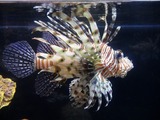
This lesson takes students through 3 iPad apps to explore and explain animal habitats. Students will use the drawing tool in Pages to complete two pictures of animal habitats, use Keynote to follow links to San Diego zoo cameras and record their own audio describing the exhibits, and finally use iMovie to record themselves in their favorite animal habitat!*The thumbnail image was taken by Lindsay Stahl at the Living Planet Aquarium

This is a lesson plan designed to meet habitat standards and informative writing standards for 2nd grade.
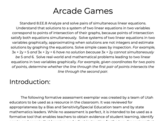
Arcade Games: Standard 8.EE.8 Analyze and solve pairs of simultaneous linear equations. Understand that solutions to a system of two linear equations in two variables correspond to points of intersection of their graphs, because points of intersection satisfy both equations simultaneously. Solve systems of two linear equations in two variables graphically, approximating when solutions are not integers and estimate solutions by graphing the equations. Solve simple cases by inspection. For example, 3x + 2y = 5 and 3x + 2y = 6 have no solution because 3x + 2y cannot simultaneously be 5 and 6. Solve real-world and mathematical problems leading to two linear equations in two variables graphically. For example, given coordinates for two pairs of points, determine whether the line through the first pair of points intersects the line through the second pair.
This formative assessment exemplar was created by a team of Utah educators to be used as a resource in the classroom. It was reviewed for appropriateness by a Bias and Sensitivity/Special Education team and by state mathematics leaders. While no assessment is perfect, it is intended to be used as a formative tool that enables teachers to obtain evidence of student learning, identify assets and gaps in that learning, and adjust instruction for the two dimensions that are important for mathematical learning experiences (i.e., Standards for Mathematical Practice, Major Work of the Grade).

This activity is intended to assess your 3rd grade students' ability to find area and perimeter of rectangles and squares. Students will be creating a robot using Google Drawing. They will then find the area and perimeter of each piece of the robot. Once they have found the area and perimeter for each shape in their robot, students will calculate the total area and perimeter of the robot. Photo by Eric Krull on Unsplash

This short video and interactive assessment activity is designed to teach third graders an overview of area of squares and rectangles - word problems.
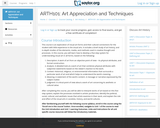
This course is an exploration of visual art forms and their cultural connections for the student with little experience in the visual arts. It includes a brief study of art history and in depth studies of the elements, media, and methods used in creative processes and thought. Upon successful completion of this course, students will be able to: interpret examples of visual art using a five-step critical process that includes description, analysis, context, meaning, and judgment; identify and describe the elements and principles of art; use analytical skills to connect formal attributes of art with their meaning and expression; explain the role and effect of the visual arts in societies, history, and other world cultures; articulate the political, social, cultural, and aesthetic themes and issues that artists examine in their work; identify the processes and materials involved in art and architectural production; utilize information to locate, evaluate, and communicate information about visual art in its various forms. Note that this course is an alternative to the Saylor FoundationĺÎĺ_ĺĚĺ_s ARTH101A and has been developed through a partnership with the Washington State Board for Community and Technical Colleges; the Saylor Foundation has modified some WSBCTC materials. This free course may be completed online at any time. (Art History 101B)

Artists are often particularly keen observers and precise recorders of the physical conditions of the natural world. As a result, paintings can be good resources for learning about ecology. Teachers can use this lesson to examine with students the interrelationship of geography, natural resources, and climate and their effects on daily life. It also addresses the roles students can take in caring for the environment. Students will look at paintings that represent cool temperate, warm temperate, and tropical climates.
In this lesson students will: Identify natural resources found in particular geographic areas; Discuss ways in which climate, natural resources, and geography affect daily life; Apply critical-thinking skills to consider the various choices artists have made in their representations of the natural world; Make personal connections to the theme by discussing ways they can be environmental stewards; Identify natural resources found in particular geographic areas; Discuss ways in which climate, natural resources, and geography affect daily life; Apply critical-thinking skills to consider the various choices artists have made in their representations of the natural world; Make personal connections to the theme by discussing ways they can be environmental stewards.

This is a lesson for introducing Similes with photography. Students will learn about Similes, then use photography to gain a deeper understanding and show their learning. They will take original pictures and borrow pictures from online to illustrate their chosen similes.They will be introduced to Wikimedia Commons, a great website for finding openly-licensed photographs. They will learn how to cite a borrowed photograph. They will show all of these skills by creating a web page through Adobe Express that shows their learning of Similes through 3 photographs, both originals and borrowed photographs. Thumbnail Citation: Kodak EasyShare M1603 Camera, by Greyfiveys, CC BY-SA 4.0, from Wikimedia Commons

Australian Aboriginal art is one of the oldest continuing art traditions in the world. Much of the most important knowledge of aboriginal society was conveyed through different kinds of storytelling—including narratives that were spoken, performed as dances or songs, and those that were painted. In this lesson students will learn about the Aboriginal storytelling tradition through the spoken word and through visual culture. They will have the opportunity to hear stories of the Dreamtime told by the Aboriginal people, as well as to investigate Aboriginal storytelling in contemporary dot paintings.

This is a lesson for teachers to use when having students research about animals. Teachers will have students use Adobe Express and create a video to share with other students what they have learned. The image usedLiam Quinn from Canada, CC BY-SA 2.0 <https://creativecommons.org/licenses/by-sa/2.0>, via Wikimedia CommonsTwo King Penguins and a gentoo Penguin walk along the beach, Liam Wuinn from Canada
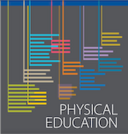
This badminton practice sheet is a great resource for students to test their skill level in serving and stroking.

This lesson is about the basic cloud types. Students will spend time gathering information, will participate in an experiment, will review the information and create an Adobe Spark video that contains particular information about each cloud type.

This worksheet will assess students basketball skills like dribbling, passing, and shooting. Students will also learn how to write goals for future tournaments.

In this lesson, students will reflect briefly on different habitats and adaptations of animals that help them survive in those environments before diving into one specific example of animal adaptation -- the beaver. Students will learn about the behavioral and physical adaptations that help the beaver to survive and thrive in its river environment. Photo by mana5280 on Unsplash.

In this lesson, students will reflect briefly on different habitats and adaptations of animals that help them survive in those environments before diving into one specific example of animal adaptation -- the beaver. Students will learn about the behavioral and physical adaptations that help the beaver to survive and thrive in its river environment. Photo by mana5280 on Unsplash.